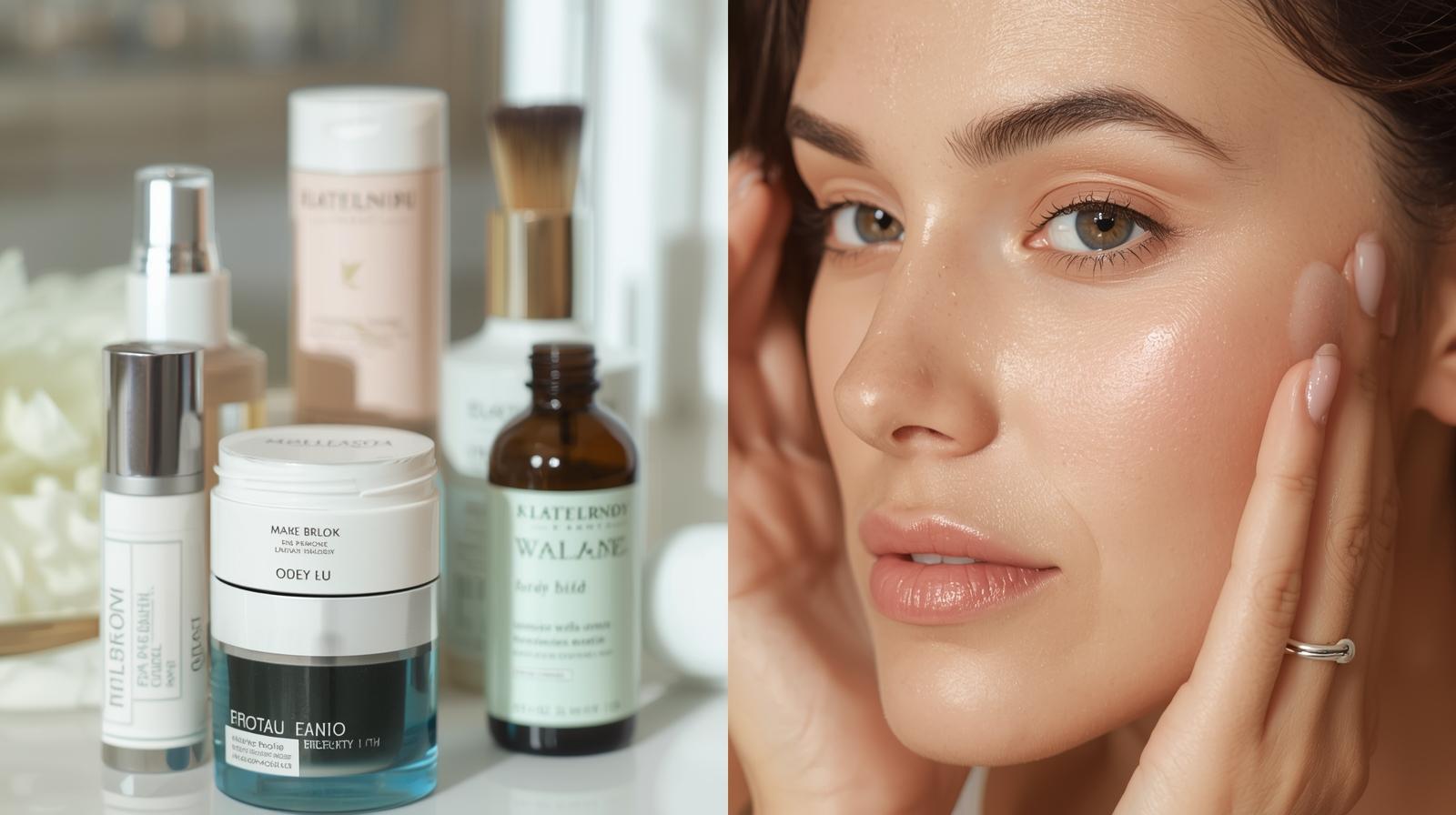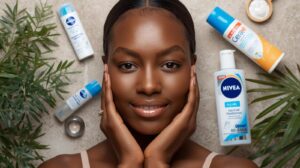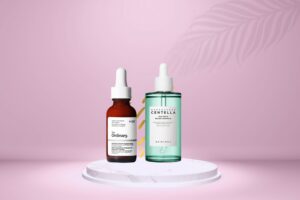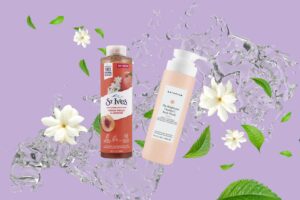If you’ve got oily skin, you’ve probably been there: standing in the skincare aisle, completely overwhelmed by rows of products promising to “control shine” and “minimize pores.” You grab a few items, try them for a week, see no results, and then wonder if you’re doing something wrong.
Here’s the thing – oily skin doesn’t need a 12-step routine with every trendy ingredient under the sun. In fact, that approach usually backfires and makes your skin produce even more oil. What you need is a simple, consistent routine that actually works with your skin type, not against it.
After years of trial and error (and way too many harsh scrubs that left my T-zone looking like a tomato), I’ve learned that the best skincare routine for oily skin comes down to just three essential steps. No complicated layering, no guesswork – just straightforward skin care that gets results.
Understanding Your Oily Skin (And Why It’s Actually Not That Bad)
Before we jump into the routine, let’s talk about what’s actually happening with your skin. Oily skin happens when your sebaceous glands decide to work overtime, pumping out excess sebum. This usually shows up as shine across your T-zone, enlarged pores that seem to collect every speck of dirt, and the occasional (or not-so-occasional) breakout.
But here’s what most people don’t realize: having oily skin isn’t necessarily a bad thing. That extra sebum production means your skin has better natural protection against environmental damage and tends to age more slowly than dry skin types. The key is learning to work with it instead of trying to strip it away.
The biggest mistake I see people with oily skin make? Thinking they need to dry their skin out completely. You know the routine – harsh cleansers, alcohol-heavy toners, skipping moisturizer because “my skin is already oily enough.” This approach actually triggers your skin to produce more oil to compensate for what you’ve stripped away.
According to the American Academy of Dermatology, over-cleansing can disrupt your skin barrier, leading to increased oil production and sensitivity. Your skin is basically saying, “Hey, you took away my natural protection, so I’m going to make more!”
The 3-Step Morning Routine That Actually Works
Step 1: Gentle Cleansing (Not War Against Your Skin)
I used to think that foam meant clean, and the more my cleanser made my face feel tight, the better it was working. Wrong on both counts.
Your morning cleanse should remove overnight buildup without stripping your skin’s natural oils. Look for a gentle foaming cleanser or gel cleanser with ingredients like salicylic acid (BHA) – but not both harsh and active at the same time.
What to look for:
- pH-balanced cleansers (around 5.5 pH)
- Salicylic acid for gentle exfoliation
- Avoid sulfates like SLS that can be too harsh
How to do it right: Use lukewarm water (hot water stimulates oil production), massage the cleanser for about 30 seconds, and pat dry with a clean towel. Your skin should feel clean but not tight or squeaky.
If you wear makeup or sunscreen, you might need to double cleanse in the evening. Start with an oil-based cleanser or micellar water, then follow with your regular cleanser. Yes, oil cleanser on oily skin – it actually works because “like dissolves like.”
Step 2: Balance with the Right Toner or Treatment
Forget everything you know about toners being harsh, alcohol-laden astringents. The right toner for oily skin should balance your skin’s pH and provide targeted treatment for your specific concerns.
For oil control and pore appearance: Niacinamide is your friend here. This form of vitamin B3 helps regulate sebum production without over-drying. Studies show that 2-5% niacinamide can significantly reduce oiliness and improve pore appearance.
For gentle exfoliation: A BHA toner with salicylic acid can help keep your pores clear and reduce that bumpy texture oily skin sometimes gets. Start with 0.5-1% concentration and use every other day initially.
How to apply: Pat the toner into your skin with clean hands or a cotton pad. Don’t rub or scrub – let it absorb naturally. Wait about a minute before moving to the next step.
Pro tip: You don’t need both niacinamide and salicylic acid every morning. Alternate them or use one in the morning and one at night to avoid irritation.
Step 3: Lightweight Moisturizing (Yes, Even for Oily Skin)
This is where a lot of people with oily skin go wrong. Skipping moisturizer doesn’t control oil – it actually makes your skin produce more to compensate for the lack of hydration.
The trick is finding the right texture. Heavy creams will likely feel too much for oily skin, but there are plenty of lightweight options that provide hydration without adding grease.
Best textures for oily skin:
- Gel moisturizers with hyaluronic acid
- Water-based lotions
- Oil-free formulas (but remember, not all oils are bad)
Key ingredients to look for:
- Hyaluronic acid for lightweight hydration
- Glycerin to draw moisture to the skin
- Niacinamide (if not using it in your toner step)
Morning SPF integration: In the morning, you can use a separate SPF or find a lightweight moisturizer with broad-spectrum SPF 30 or higher. The Skin Cancer Foundation recommends daily sunscreen use regardless of skin type.
Evening Routine: Small Tweaks for Better Results
Your evening routine follows the same basic structure but with a few modifications:
Cleansing: If you wear makeup or sunscreen, start with an oil cleanser or micellar water, then follow with your regular cleanser.
Treatment: Evening is when you can introduce stronger actives. If you’re new to skincare, start with a retinoid or retinol once or twice a week. These help with cell turnover and can reduce both acne and early signs of aging.
Moisturizing: You can use a slightly richer moisturizer at night since you won’t be layering makeup over it.
The Mistakes That Keep Your Skin Oily
Over-cleansing: Washing your face more than twice a day or using harsh scrubs disrupts your skin barrier. Your skin responds by producing more oil.
Product overload: Starting five new products at once makes it impossible to tell what’s working and increases your risk of irritation.
Expecting overnight results: Real changes in oil production and skin texture take 4-6 weeks minimum. Stick with your routine long enough to see results.
Ignoring the rest of your skin: Just because your T-zone is oily doesn’t mean your entire face has the same needs. You might have combination skin that needs different treatment in different areas.
Building Your Routine: Products and Budget Tips
You don’t need to spend a fortune to get good results. Some of the most effective oily skin products are available at the drugstore.
Budget-friendly options:
- CeraVe Foaming Facial Cleanser for gentle daily cleansing
- The Ordinary Niacinamide 10% + Zinc 1% for oil control
- Neutrogena Hydro Boost for lightweight hydration
When to invest more: Consider spending more on products you use daily (cleanser, moisturizer) and treatments with active ingredients where quality and concentration matter.
Introducing new products: Add one new product every 2-3 weeks. This way, you’ll know exactly what’s working and what might be causing problems.
What to Expect and When
Week 1-2: Your skin might go through an adjustment period. Some people experience temporary dryness or even a few more breakouts as their skin adapts.
Week 3-4: You should start noticing less midday shine and improved skin texture.
Week 6-8: This is when you’ll see the most significant changes in oil production and overall skin appearance.
Seasonal adjustments: Your skin’s needs change with the weather. You might need a slightly richer moisturizer in winter or a more mattifying one in humid summer months.
When Simple Isn’t Enough
This 3-step routine works for most people with oily skin, but everyone’s skin is different. If you’re still struggling with persistent acne, excessive oiliness, or irritation after 8 weeks, it might be time to see a dermatologist.
Professional treatments like chemical peels or prescription retinoids can address more stubborn concerns that over-the-counter products can’t handle.
Your Next Steps
The best skincare routine is the one you’ll actually stick to. Start with these three basic steps, give your skin time to adjust, and resist the urge to add more products just because they sound interesting.
Remember, consistency beats complexity every time. Your future self (and your less-oily T-zone) will thank you for keeping it simple.



